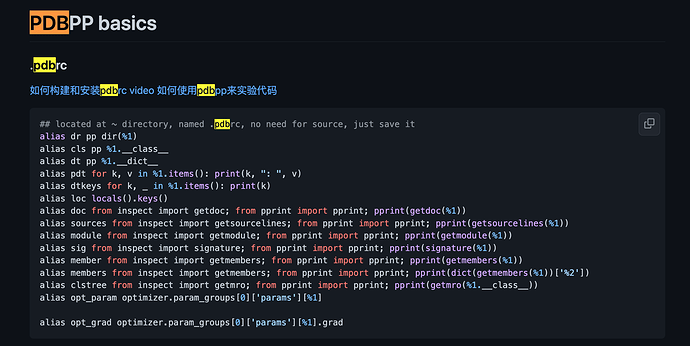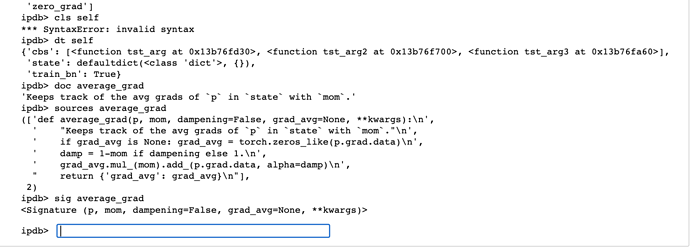Not exactly sure whether I understand what you mean here, but it forced me to dig into my previous notes on pdb from my last life ![]() in fastai which I totally forgot almost. (please tolerate a few Chinese characters there, I was saving them in case I forgot which I did. ) I will give a try to them later to see whether they can in jupyter notebook or not.
in fastai which I totally forgot almost. (please tolerate a few Chinese characters there, I was saving them in case I forgot which I did. ) I will give a try to them later to see whether they can in jupyter notebook or not.
Actually I don’t think you need to download pdbpp for using the aliases above in Jupyter notebook. Now I remembered pdbpp is very nice (coloring and other conveniences) to work on pure pyfile but not Jupyter notebook. If you can get it to work with Jupyter notebook, I’d love to learn to use it there too.
Yes, they still work I just tried them in jupyter notebook



